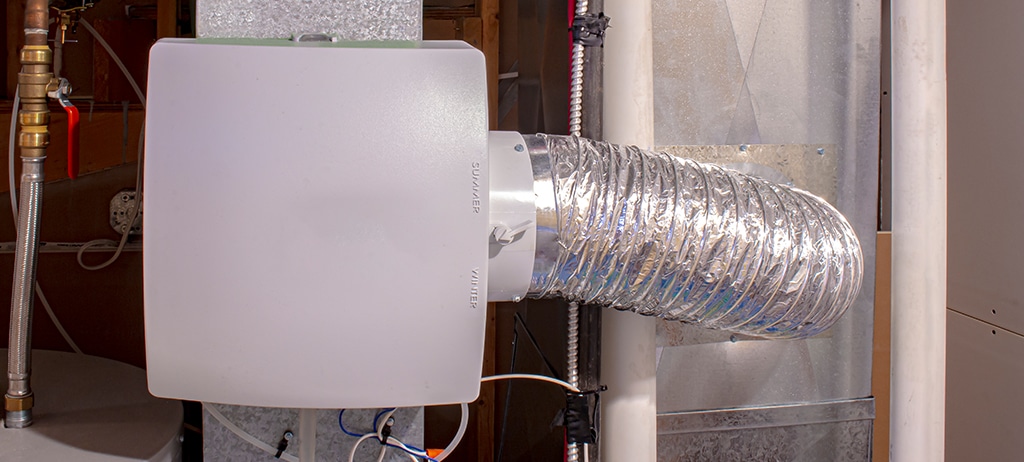HVAC humidification is a crucial component of modern climate control systems, ensuring indoor air quality and comfort in residential, commercial, and industrial spaces. This process involves adding moisture to the air, which can have significant impacts on health, energy efficiency, and the preservation of materials and equipment.
In this blog, we’ll get into the importance of HVAC humidification, the various methods used, and the benefits it provides.

Why HVAC Humidification Matters
Humidity levels play a vital role in indoor air quality. The ideal indoor humidity level is typically between 30% and 50%. When humidity drops below this range, it can cause a host of issues, including:
1. Health Problems:
Dry air can lead to respiratory problems, dry skin, and irritated eyes. It can also exacerbate conditions like asthma and allergies.
2. Comfort:
Low humidity can make indoor environments feel colder than they actually are, leading to discomfort and increased heating costs.
3. Static Electricity:
Dry air increases the risk of static electricity, which can damage electronic devices and be a nuisance in daily life.
4. Material Damage:
Wood, paper, and other materials can become brittle and crack in low humidity environments. This is particularly concerning in places like museums and libraries.
Methods of HVAC Humidification
There are several methods used to achieve HVAC humidification, each with its own advantages and applications:
1. Steam Humidifiers:
These devices boil water to produce steam, which is then distributed through the HVAC system. They are highly effective and can handle large spaces, but they require significant energy to operate.
2. Evaporative Humidifiers:
These systems use a wick or filter to absorb water, which then evaporates into the air. They are energy-efficient and low-maintenance, making them popular in residential settings.
3. Ultrasonic Humidifiers:
Utilizing high-frequency vibrations, these devices produce a fine mist of water droplets that are released into the air. They are quiet and energy-efficient, but they require regular maintenance to prevent mineral buildup.
4. Spray Humidifiers:
These systems use nozzles to spray a fine mist of water into the air stream. They are often used in industrial settings where precise humidity control is required.

Benefits of HVAC Humidification
Implementing HVAC humidification can offer numerous benefits, including:
1. Improved Health:
Maintaining optimal humidity levels can reduce the incidence of respiratory infections, skin irritations, and other health issues related to dry air. It can also help alleviate symptoms for individuals with asthma and allergies.
2. Enhanced Comfort:
Proper humidity levels can make indoor environments feel more comfortable, reducing the need for excessive heating and cooling. This can lead to energy savings and a more pleasant living or working environment.
3. Preservation of Materials:
By preventing the drying and cracking of wood, paper, and other materials, HVAC humidification helps protect furniture, artwork, and important documents. This is particularly important in museums, libraries, and archival facilities.
4. Protection of Equipment:
In industrial and commercial settings, maintaining appropriate humidity levels can prevent static electricity and its associated risks to electronic equipment. It can also extend the lifespan of machinery and reduce maintenance costs.
Implementing HVAC Humidification
When considering HVAC humidification, it’s important to assess the specific needs of your space. Factors to consider include the size of the area, existing HVAC infrastructure, and the desired humidity levels.Consulting with an HVAC professional can help you determine the best type of humidification system for your needs.

Maintenance and Monitoring
Regular maintenance is essential for the effective operation of HVAC humidification systems. This includes cleaning and replacing filters, checking for mineral buildup, and ensuring that all components are functioning correctly.
Additionally, monitoring humidity levels with a hygrometer can help you maintain optimal conditions and adjust settings as needed. HVAC humidification is a vital aspect of indoor climate control that significantly impacts health, comfort, and the preservation of materials and equipment.By understanding the importance of humidity, the methods available for humidification, and the benefits it provides, you can make informed decisions about incorporating humidification into your HVAC system.


